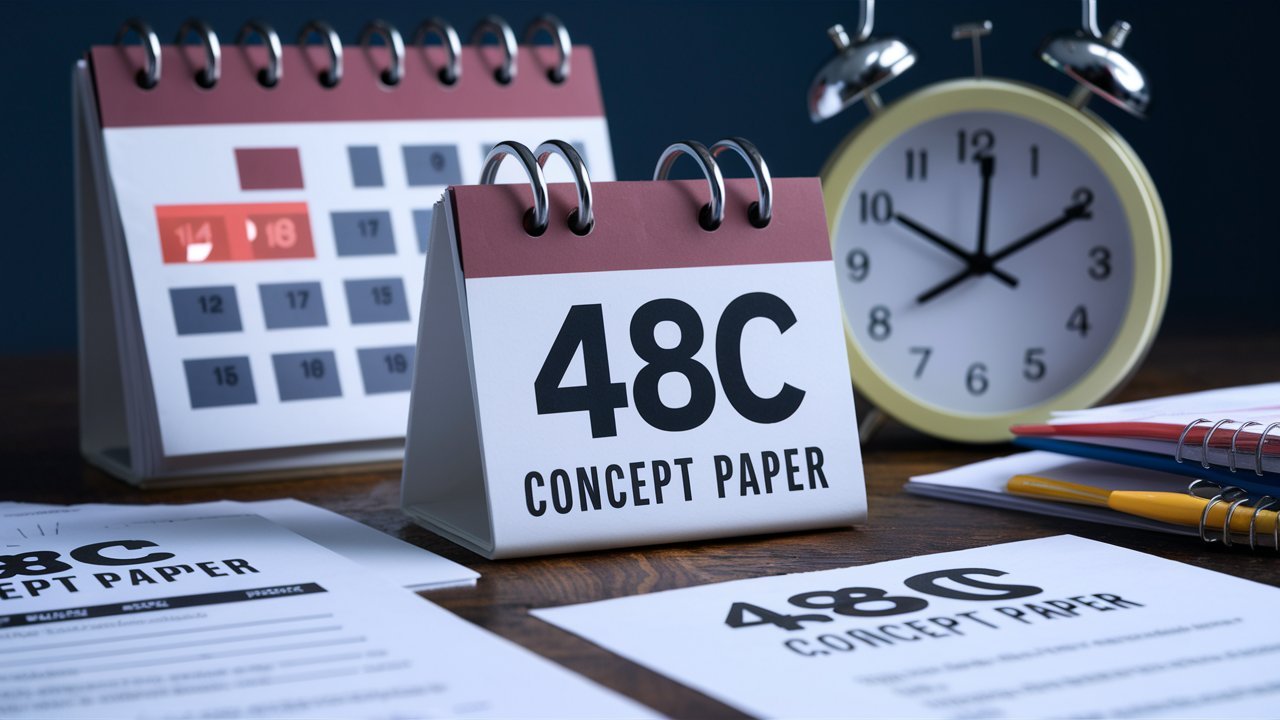Introduction
The Inflation Reduction Act (IRA) introduced a significant incentive for businesses investing in clean energy technologies: Section 48C Concept Paper Deadline of the ITA which is the Advanced Energy Project Credit. This credit has caused a lot of attraction as it honors a tax credit of up to 30% of qualifying investments.
A crucial step in accessing this credit is submitting a concept paper. This article delves into the intricacies of the 48C concept paper deadline, providing essential information for potential applicants.
What is the 48C Concept Paper?
Quite specifically, a concept paper is a general and preliminary note of an intended advanced energy project. The study also acts as a filter through which the Department of Energy (DOE) judges the project’s probable suitability for the 48C Concept Paper Deadline credit. It may also expand the recognition and reception of the prospective full application which, in turn, makes concept papers the groundwork for a complete application.
Importance of the Deadline
Adhering to the concept paper deadline is paramount for several reasons:
- Eligibility: Late submissions are typically disqualified, eliminating the opportunity to compete for the credit.
- Timely Feedback: Early submission allows for potential feedback from the DOE, enabling necessary adjustments to the project.
- Project Planning: Meeting the deadline aligns with project timelines and ensures efficient utilization of resources.
The 48C Concept Paper Deadline
Note: As of September 2023, the specific deadline for the 48C concept paper has passed. However, the information provided here remains relevant for future rounds or similar programs.
Typically, the IRS announces the concept paper submission window well in advance. It’s crucial to monitor official IRS and DOE channels for updates.
Key Components of a Strong Concept Paper
A well-crafted concept paper should include:
- Project Overview: A clear and concise description of the project, including its objectives and scope.
- Technology Description: Detailed explanation of the advanced energy technology to be employed.
- Project Location: Identification of the project’s geographic location.
- Economic Impact: Assessment of the project’s potential economic benefits.
- Job Creation: Estimation of job opportunities created by the project.
- Environmental Benefits: Quantification of the project’s positive environmental impact.
- Investment and Financing: Outline of the project’s financial requirements and sources.
Tips for Successful Concept Paper Submission
- Start Early: Begin drafting the concept paper well in advance of the deadline.
- Be Specific: Provide clear and detailed information about the project.
- Highlight Innovation: Emphasize the unique aspects of the technology or approach.
- Comply with Guidelines: Adhere to the formatting and content requirements specified by the IRS.
- Seek Expert Assistance: Consider consulting with energy experts or tax professionals.
FAQs
Q: What happens after submitting a concept paper?
A: The DOE reviews concept papers and provides feedback, encouraging or discouraging further application.=
Q: Can I modify my concept paper after submission?
A: Generally, no changes can be made after submission.
Q: Is there a fee to submit a concept paper?
A: There might be a nominal fee, but it typically varies. Check the official guidelines.
Q: What if I miss the deadline?
A: Missing the deadline usually disqualifies the project from consideration for the credit.
Conclusion
It is important to note significant planning is needed as well as focus when dealing with the 48C Concept Paper Deadline. Besides appreciating the value of time, writing a worthy concept paper, and being up-to-date with program changes, the business may enhance its probability of achieving the 48C credit besides promoting the advancement in clean energy technology.
